How to starch bed linen
Home textiles, some items of clothing sometimes have to be treated with starch to give them rigidity, a clear form. In modern times, this is done much less frequently than, for example, at the end of the last century. Starched things are much less susceptible to pollution, have a very different look than just washed. How to starch bed linen, tulle, clothes, with or without a washing machine, more in the text of this article.
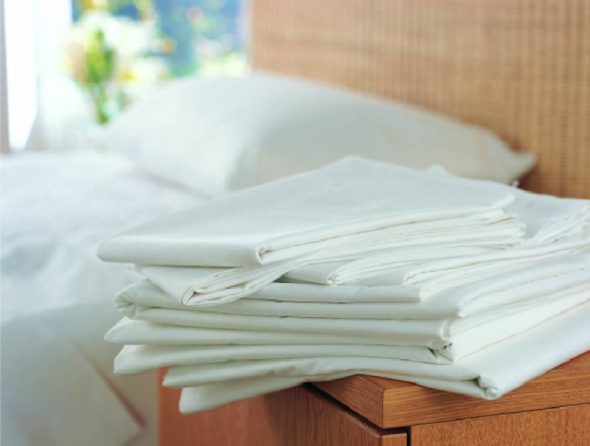
Starched items look elegant, fresh and festive.
Content
- 1 Why starch linens
- 2 How Starch Bedding In The Last Century
- 3 How to starch bedding, tulle at home
- 4 How to starch shirts at home
- 5 How to starch things from different types of fabric
- 6 How to starch bed, clothes in a washing machine.
- 7 How to iron, dry starched things
- 8 Conclusion
- 9 Video: How to starch underwear
Why starch linens
Starched clothes, linen has some distinctive characteristics:
- textiles become noticeably denser, its fibers are strengthened;
- linen products crunch pleasantly, smell good;
- the material is practically not wrinkled, keeping the required shape;
- even if the clothes were yellowed, they are bleached;
- dirt is less absorbed into clothing.
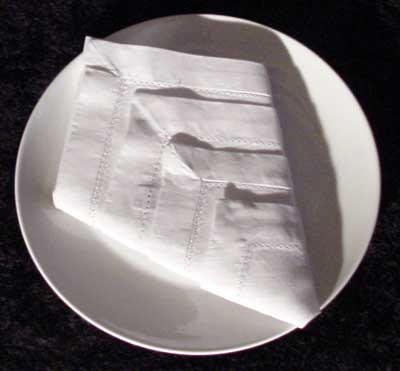
Starch gives products a neater appearance, protects against rapid contamination.
But it is not always worth starch bedding - starched fabric "does not breathe", as its pores are clogged. This can create discomfort for the skin, contribute to the occurrence of fungus, mold, and the multiplication of disease-causing bacteria. It is for this reason that bed starch is very, very soft.
It is also undesirable to starch underwear, summer clothes, except for some of its details. Starch is able to change the shade of dark tissues, but on synthetic it “does not hold.” Textile elements embroidered with floss threads can generally stick together, be hopelessly spoiled by starch. This process is well tolerated by a coarse calico, cotton, satin, linen, chintz, cambric.
How Starch Bedding In The Last Century
In the last twentieth century, bedding, table linens, and clothes were processed mostly independently, at home by various types of starch:
- potato;
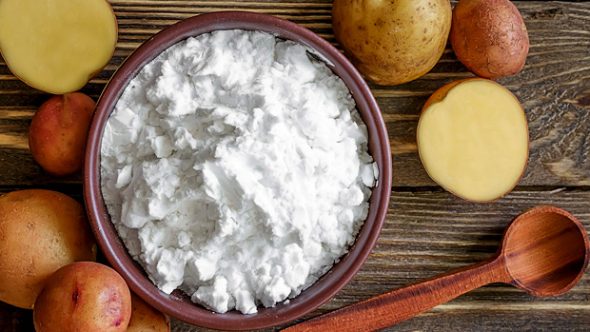
Potato starch - loose powder, which is painted white
- wheat;
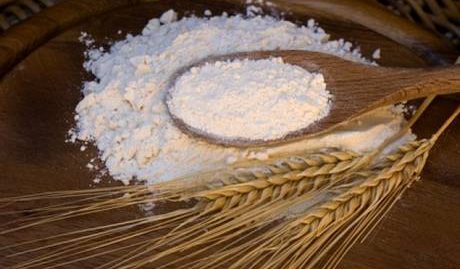
Wheat starch grains are round or elliptical
- rice;
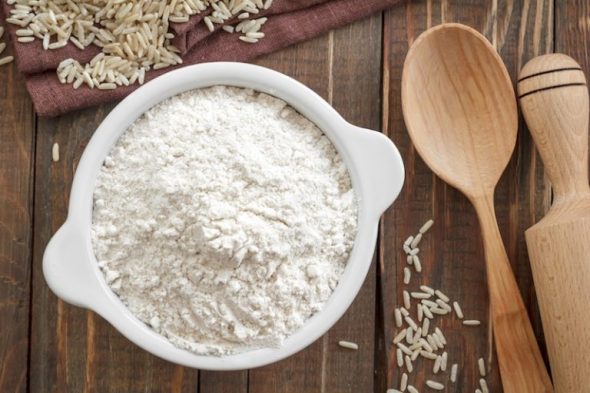
Rice starch is a soft white powder consisting of small particles only a few microns in size.
- corn;
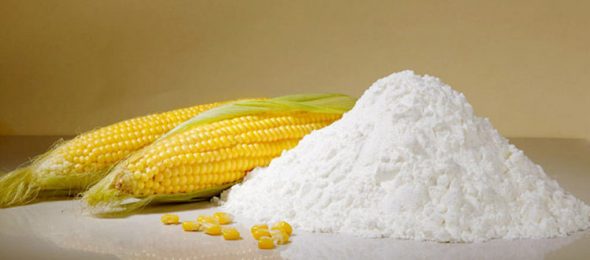
Corn starch is much softer than potato, it can dissolve even in cold water
- barley.
There are different types of starch:
- soft - underwear, bed linen, summer dresses, curtains;
- medium - used for men's shirts, table linen, textile napkins;
- stiff - exclusively for collars, cuffs, details of fancy dress.
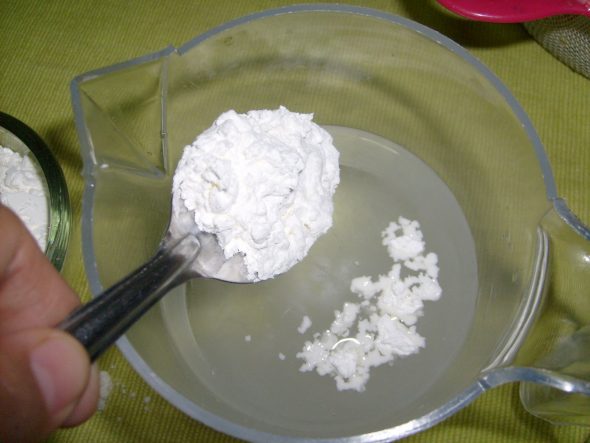
To process starch underwear at home, you need to brew the starch in the correct proportion.
There is no difference what starch to use, the only difference is in concentration.In the last century, every woman had to be able to starch clothes - special means for various textile materials did not exist on the market, and not everyone had a washing machine.
How to starch bedding, tulle at home

Starched bedding is less wrinkled and better washed.
Bedding, as well as most types of tulle, starch curtains, gently, pre-wash, carefully wring out.
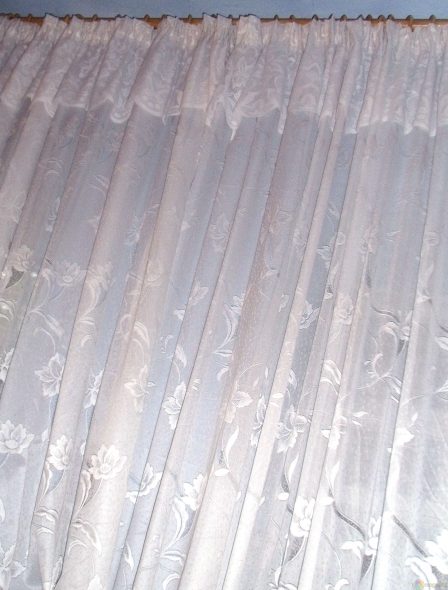
Tulle looks more attractive after starching
Then they prepare this solution:
- composition of the mixture - one teaspoon of starch per liter of cold water;
- First, the starch is diluted in a small container, filling with two glasses of water;
- the more laundry is required to starch, the more such liquid is cooked;
- should be stirred so that the consistency comes out homogeneous, without lumps;
- further put to warm the water - as much as necessary for rinsing;
- after boiling, the starch solution is poured into the water from a small container, mixed;
- the composition is cooled - it should be so “slippery”, denser than usual, water;
- bed rinse in the above mixture for a few minutes, tulle - up to half an hour.
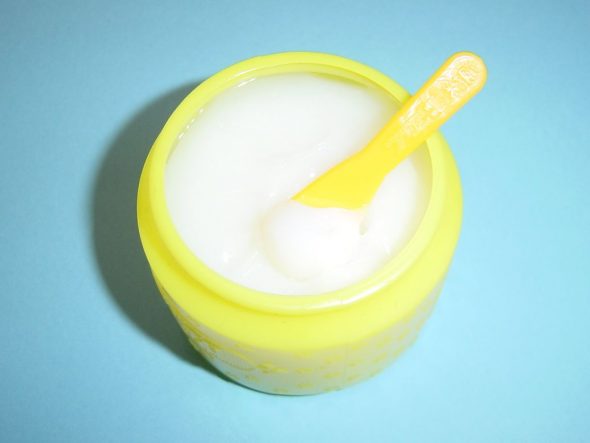
Traditional Potato Starch Blend
Before you hang out to dry, do not unscrew the bed - let it sag slightly, after which you can slightly squeeze. Before drying, it is important to shake the cloth, straighten it well, and iron starchy even better slightly damp.
To starch the already dry fabric, the above liquid is collected in a spray bottle, treated with clean textiles. Such a process saves time and effort.
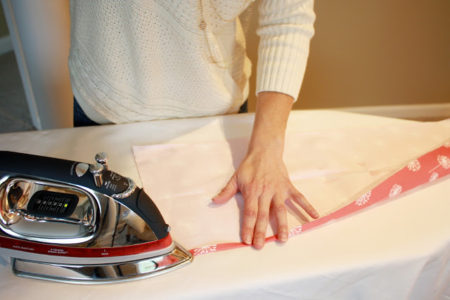
You can lightly starch the matter by ironing it through gauze soaked in a weak starch solution.
How to starch shirts at home
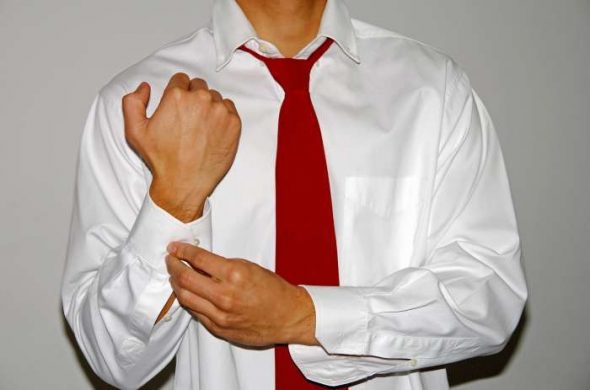
Starched things look pretty festive, but they do not allow air well, so they are not suitable for constant wear.
High-quality starched shirt emphasizes the status of the owner, giving it elegance. The following method is suitable for both women's and men's shirts:
- preparing a medium-hard solution of starch or purchased synthetic means;
- the composition is thoroughly mixed in the basin, so that there are no lumps of it filtered through several layers of gauze;
- the shirt is put into the mixture for about fifteen minutes;
- then the product is slightly squeezed;
- so that the shirt does not deform, it is dried on the shoulders - preference is given to the wide;
- It is not recommended to dry completely, ironing the thing with a slightly wet one, as yellow spots often appear on the over-dried ironing.
Particular attention should be paid to the collar and cuffs - these parts are starch separately, the hardest solution, stroked, giving them a strong stand.

If it is necessary to starch only the collar or cuffs of a shirt, it is better to use a spray gun or a brush.
How to starch things from different types of fabric
Knitted fabric is also treated gently, but it should be dried solely on a horizontal surface, otherwise the product will stretch, lose its shape. For knitted products, giving them stiffness, recommend processing gelatin mixture:
- a large spoonful of gelatin is poured with half a glass of water, heated in a water bath until completely dissolved;
- after that add another glass of water;
- the product is impregnated with the resulting solution.
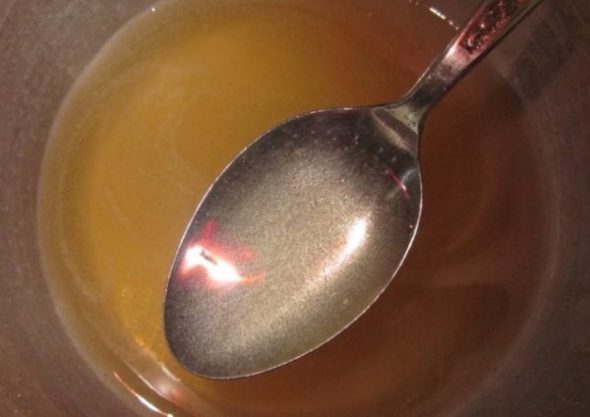
Ready gelatin solution - express starching
This composition is also used for lace napkins, textile colors and other similar decorations. For processing dark or colored fabrics, starch is unacceptable, as it leaves whitish spots. Such fabrics are recommended adhesive composition:
- depending on the purpose of the textile material, soft or hard processing is performed;
- for soft processing, PVA glue is diluted with one-to-one ratio with warm water, for a hard variant - at a concentration of two to one;
- the fabric is placed in a solution, after complete impregnation is removed, wring out.
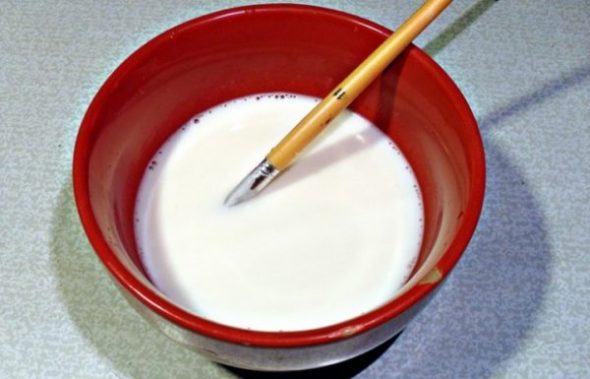
Starch clothes can be PVA glue, for this it needs to be diluted with water
This method is not suitable for underwear, excessively large products. There is also a sugar syrup treatment:
- six to seven tablespoons of sugar boiled in a liter of water;
- textiles are placed in a hot solution, impregnated, squeezed;
- There is one drawback - the “sweet” fabric will attract insects.
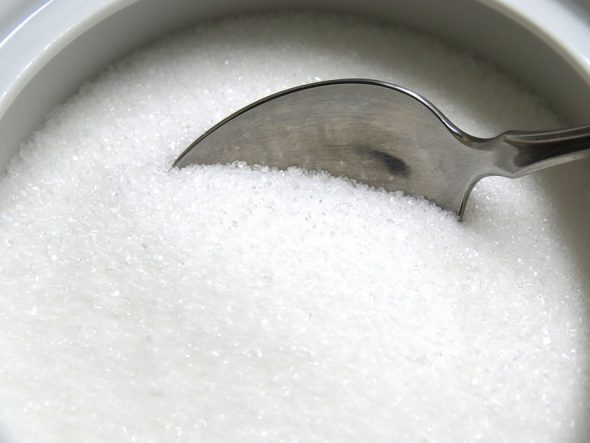
Starch things can also be ordinary white sugar
To starch the softest silk fabric, a solution of gelatin and silicate glue will do - in this case they dilute one spoon per five liters, soak the product, wring it out a little. Silk after processing gets elasticity, beautiful gloss.
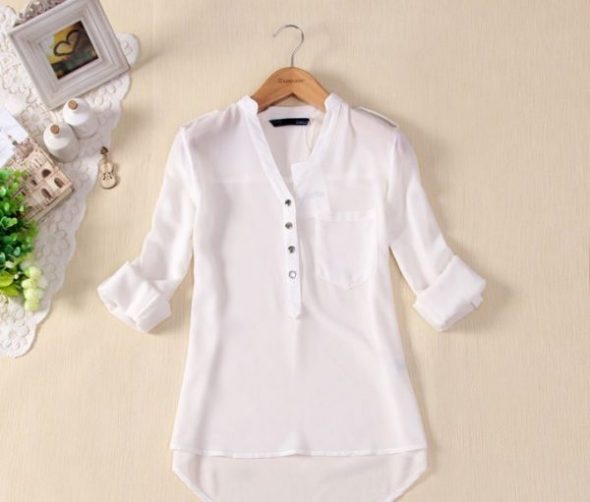
When you need to starch thin and delicate fabric using a weak solution
Fatin is used for sewing elegant dresses, ballet tutus. It will require a starch solution of medium hardness - two teaspoons per liter of water. The product is carefully soaked, removed, straighten.
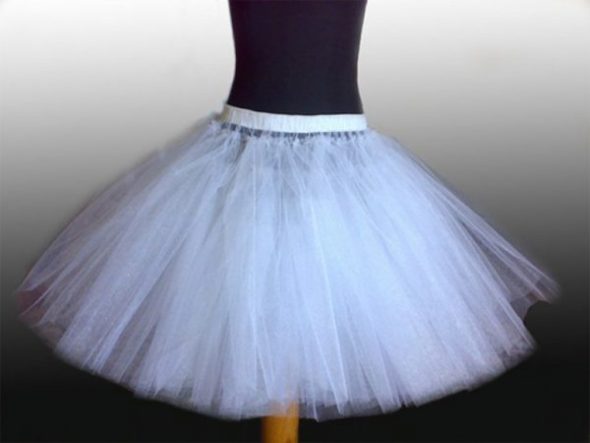
Petticoat for stiffness needs two tablespoons of starch per liter of water
Multi-layered gauze products are treated with the most stringent methods - at least two large spoons of starch and a small spoon of boron sodium salt are added to one liter of water, the product is immersed there, and, when it is sufficiently saturated, wring out.
Stitch knitted napkins, school white apron with numerous laces, it is possible srednezhestky solution.
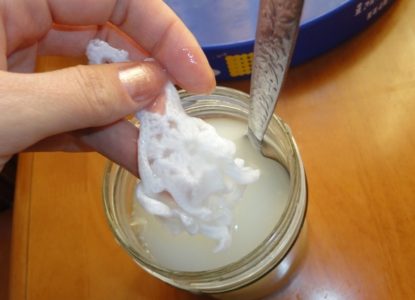
Openwork products from fine yarn are kept in a starch liquid for 5-10 minutes
The product is pre-washed by machine or hands, put into the starch mixture for twenty minutes, removed, you do not need to wring out the apron. As an option - a freshly washed apron is simply sprayed with a solution from a spray bottle or pro-blotted with a wet starch cloth.
Stitch fabric for embroidery, in order to simplify the process of embroidery on it. For this, the textiles are put in a hard starch solution for about fifteen minutes, they are well wrung out. Already embroidered canvas is pre-washed, impregnated with a medium-hard composition for no more than fifteen minutes.
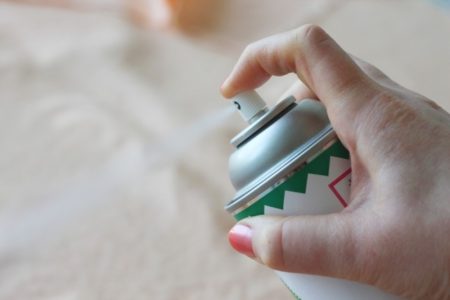
For starchy expensive fabric with a bright rich color and complex texture is better to use ready-made tool
How to starch bed, clothes in a washing machine.
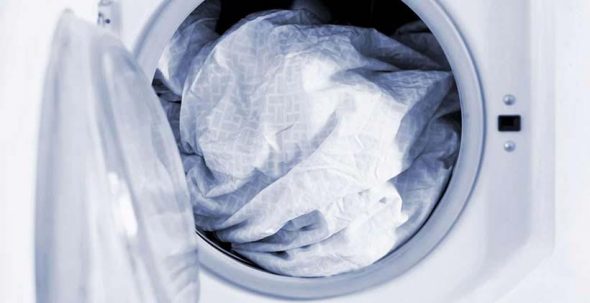
To starch things in the washing machine, you need to add a small amount of adhesive liquid in the compartment for the air conditioner and start the usual mode of washing
Ready-made formulations for starch are sold in household chemical stores - some are applied to the fabric before ironing, others - during washing. To bed the bed, washing in the washing machine is as simple as:
- for starters prepare a "soft" starch solution according to the above scheme;
- the composition is poured into the engine compartment for the air conditioner;
- tumbler washing machines set to rinse;
- after the end of the process, the laundry is taken out, shaken, dried;
- the machine is wiped from the inside, airing.
When starching in the washing machine, special synthetic liquids are often used, for example, on the basis of polyvinyl acetate, which do the job just as well. Additionally, do not use any air conditioners.
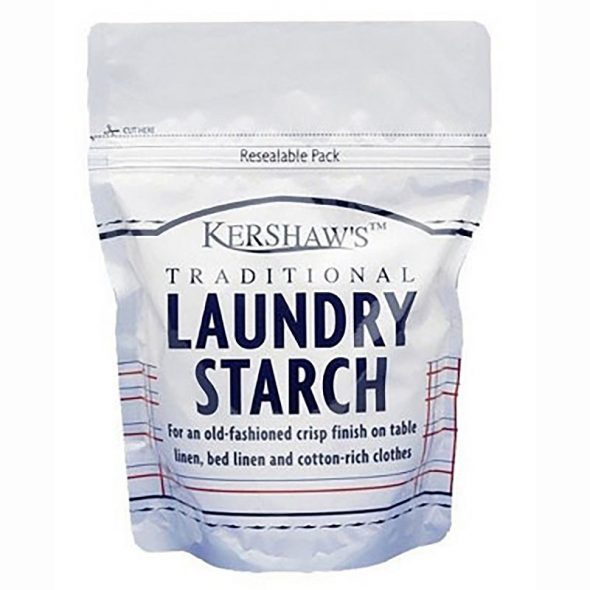
Starter, which is added directly during the wash
For the starching of clothes, table linen from various types of fabric, a solution of the desired composition and concentration is prepared, poured into the machine, as described above.
How to iron, dry starched things
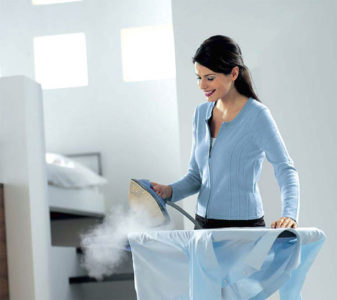
Dry the fabric until it becomes slightly damp, then proceed to ironing.
All fabrics are ironed yet wet, on both sides, but a little differently:
- silk - through a smooth fabric;
- tulle - ironed in the wet state, straightening the folds;
- embroidered items - only from the wrong side;
- lace - through a smooth fabric or gauze;
- gauze - ironed wet, folds fold immediately;
- white school apron ironed with a warm iron.
If a little salt is added to the starch solution beforehand, the sheets will not stick to the iron, they will have a unique luster.
Dry them also should not be the same:
- silk blouse, dress neatly hung on hangers;
- fatin, gauze is dried in expanded form;
- lace school apron dried, spreading out on a horizontal surface;
- canvas for embroidery is also dried horizontally;
- thin embroidered napkins or laces are dried on a towel, jokes invisible edges, straightened.
Any starched items should not be dried in the cold, in direct sunlight.
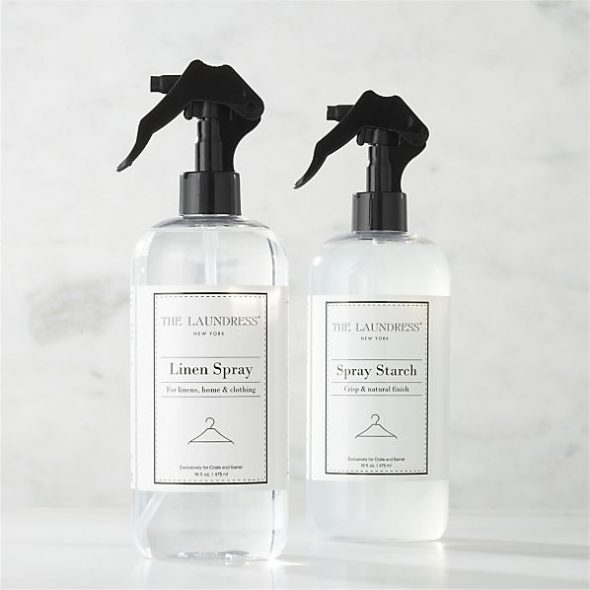
Spray for starch before ironing
Conclusion
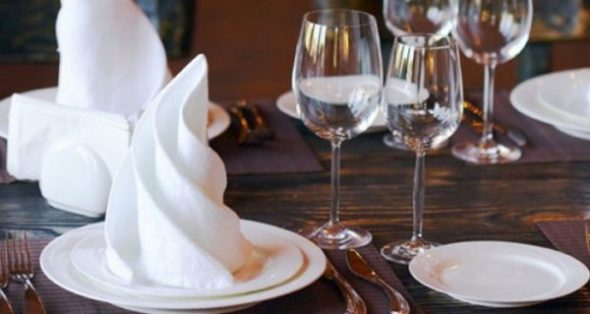
With the help of starching, you can make the products stable and bleach them.
Home starch using different types of starch, special formulations, washing machine is very relevant in some situations. "Hard" white collar and cuffs give the appearance of rigor and solidity. When processing any tissues that directly relate to open areas of the body, they interact with them for a long time, it is desirable to use the weakest solutions or to give up completely.
Video: How to starch underwear
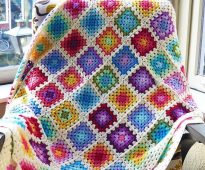 Knit a crochet crochet of yarn
Knit a crochet crochet of yarn
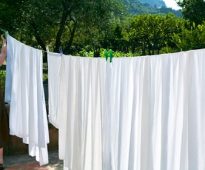 How to whiten bedding at home: the rules for removing stains
How to whiten bedding at home: the rules for removing stains
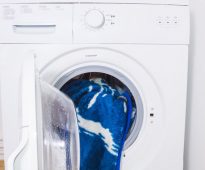 Washing blankets at home
Washing blankets at home
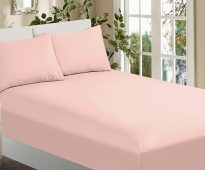 How to choose a sheet with an elastic to the size of the mattress
How to choose a sheet with an elastic to the size of the mattress
 How to fold a sheet on an elastic band
How to fold a sheet on an elastic band






